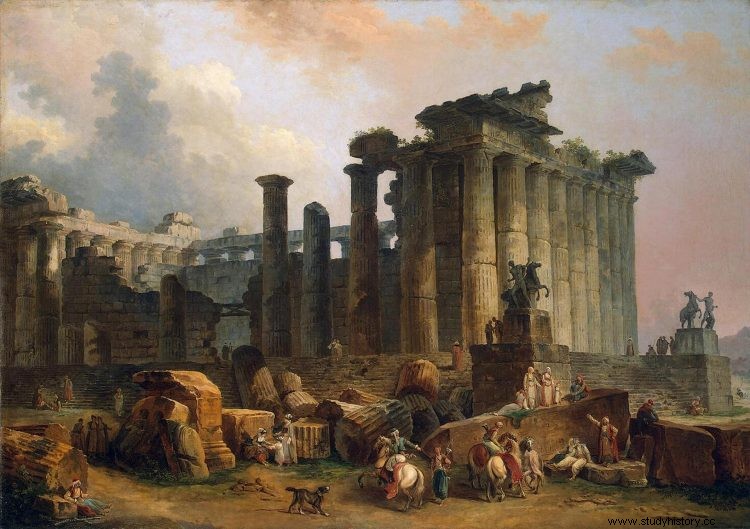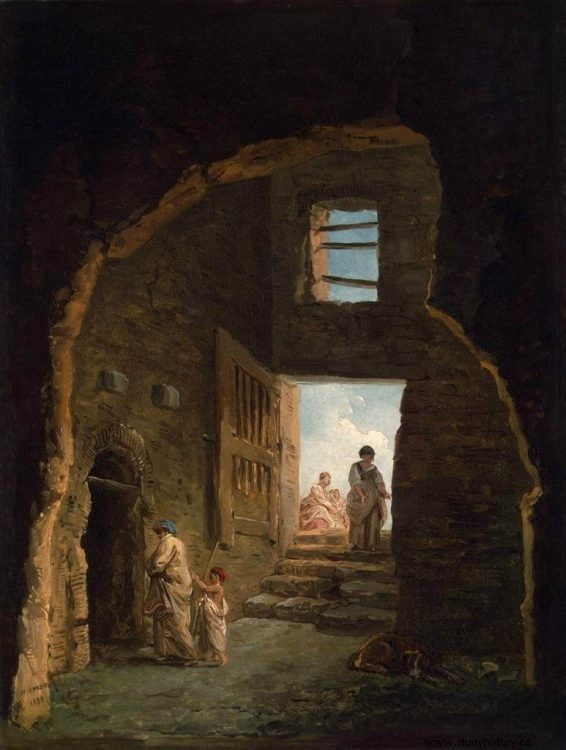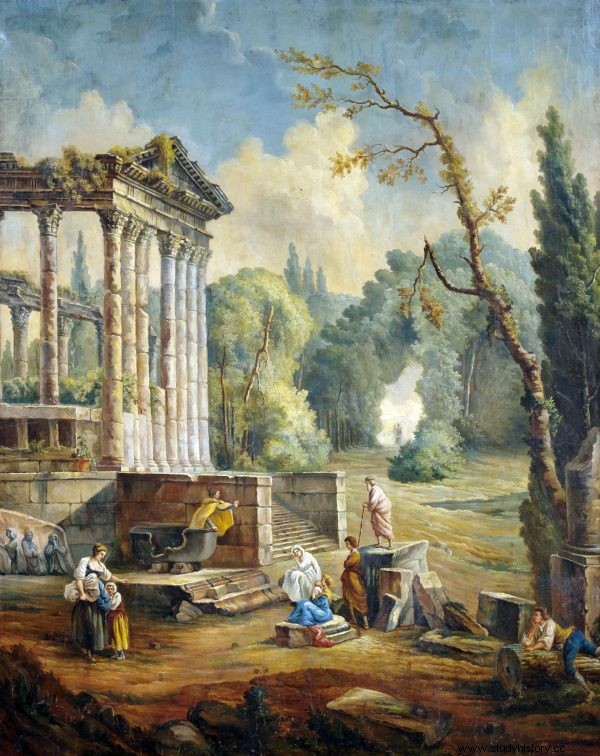All men have a secret attraction for ruins. This feeling is due to the fragility of our nature, to a secret conformity between these destroyed monuments and the speed of our existence.
Chateaubriand

Ancient ruins, sometimes reflected in the calm waters, or almost hidden by thickets of creepers and bushes. Peaceful rural nature, the sky almost always clear, the dying rays of the sun make their way through the gaps in the trees. Soft interplay of similar colors, remarkable skill in depicting architecture amid busy human figures. All this results from the painting of the French artist Hubert Robert (1733 – 1808).
The French landscape painter gained European fame for large canvases with romanticized images of ancient ruins surrounded by idealized nature. His nickname was “Robert des Ruins”.


The ruins of the paintings of the brilliant connoisseur of antiquity always have a romantic character. Inevitably, admiring the monuments of ancient Rome, the artist seems to mourn the past grandeur of distant centuries. Neglect of existence is his main and favorite motive. He remembers the people of the past who created these buildings, but he also does not forget the present – he inhabits the ruins with cheerful crowds of his contemporaries, destroying or contributing to the destruction of these symbols of the past. The ruins depicted by Robert are usually densely populated:they live there, raise cattle, wash and dry clothes, do the most everyday things. Sometimes, among the inhabitants of the ruins, we see the figure of an artist, dreaming in the shadow of a dilapidated portico. Often in this figure we can recognize the author himself.


This genre is very characteristic of the second half of the 18th century – it is a master of the “ruined” architectural landscape. This does not mean that it was Hubert Robert who discovered a similar genre for art:long before him, images of the ruins of ancient buildings existed in painting. Ruins were an indispensable part of any classical landscape, regardless of the country in which it was created.

These paintings by Hubert Robert, representing mainly the monuments of Rome, have been well studied and described. They have always been at the center of the attention of its researchers, as well as its frequent images of magnificent Italian Renaissance palaces and villas, but also full of parks of poetry, Versailles or Marly and other picturesque places in France. . Interest in these works by the artist is quite natural:they are of great importance for the history of art. These works made the painter famous among his contemporaries, for whom he received the nickname Robert of the Ruins, they also won warm praise, and not least from the pen of Diderot.


Already in his early works he was very different from contemporary masters of architectural landscape. The latter saw their task in the faithful reproduction of architectural detail, while Robert strove to convey the harmony of nature and ruins on the basis of color and tone. Thus, in the large panel “Landscape with a ruined temple and people listening to a speaker”, the stone skeleton of the palace, represented on the right, is balanced by a picturesque pine tree with a smoky crown and a powerful, sinuous trunk. The colonnades, seen at the back of the painting, are perceived above all poetically against a background of sprawling trees drowning in a bluish mist.

People in Robert's paintings feel good among old buildings, antiquity is near, “inhabited” by them. Without people, the old architecture would look cold, uncomfortable. He is one of the outstanding figures in the history of painting and the decorative arts.
Sources and references:
Universalis
Gallica
Larousse
The Louvre
